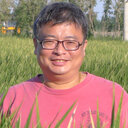Bioassay guided isolation and identification of anti-inflammatory active compounds from the root of Ficus formosana.
Atslēgvārdi
Abstrakts
Activity-directed fractionation and purification processes were employed to identify the anti-inflammatory active compounds using lipopolysaccharide (LPS)-stimulated mouse macrophage (RAW264.7) in vitro. Air-dried roots of Ficus formosana were extracted with methanol and separated into n-hexane, chloroform, ethyl acetate, n-butanol, and water layers. Among them, the chloroform layer showed strong activity and was subjected to separation and purification by using various chromatographic techniques. Five compounds showing potent activity were identified by comparing spectral data to be β-sitosterol, stigmasterol, psoralen, kaempferol, carpachromene, and syringic aldehyde. When macrophages were treated with psoralen and kaempferol together with LPS, a concentration-dependent inhibition of nitric oxide (NO) and tumor necrosis factor (TNF-α) productions were detected. Western blotting revealed that kaempferol, psoralen, and carpachromene blocked protein expression of inducible nitric oxide synthase (iNOS) and cyclooxygenase-2 (COX-2) in LPS-stimulated macrophages. The results confirmed that the traditional use of F. formosana could be a potential anti-inflammatory agent.


